By Jordan Baker
Trish Smith sits on the beach between her two ruddy boys. The sand is at their feet, the wind tickles their curls and the waves crash behind them. They wear hearty, joyful smiles. It looks like a perfect moment.
Perfection, we now know, was important to Smith. It’s one of the forces that has dogged her mental health, alongside her anxiety, rigidity and obsessiveness. Her mental stressors were so great that her former employer considered them a hazard to other staff and let her go in 2020, the year before the family Christmas shot was taken.

Trish Smith and her sons in a 2021 beachside Christmas photo from Facebook.
This week, Smith allegedly killed the boys she’d held so tight in that photo. Russell was 11, Ben was nine. She stabbed them, police said, and then turned the knife on herself. She survived and was under police guard in hospital. On Friday night, she was charged with two counts of murder. Smith’s former partner found their bodies when he went to their Blue Mountains home to check on his sons, worried by her silence.
Few crimes upset the community like filicide, or the murder of one’s child. It’s particularly shocking when the perpetrator is a mother; it challenges the deeply held fallacy that all mothers are protectors and nurturers. There’s almost one filicide per fortnight, and almost half – about 45 per cent – are committed by women.
“There’s a very strong view in the community that filicide never happens,” said Professor Thea Brown, from the Monash Deakin Filicide Research Hub. “But it does happen. It happens regularly.”
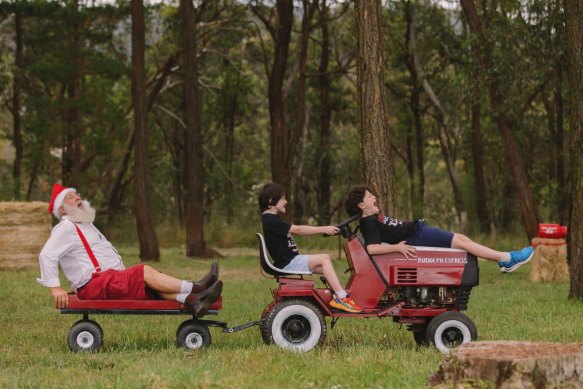
Ben and Russell Smith, who were found dead in their Faulconbridge home on Tuesday
Each is unique, but there are common factors. Mental health is often a contributor, and more so when the killer is a mother. Parental separation is a significant factor, too. Many male offenders, particularly stepfathers, have histories of domestic violence towards their spouse. Both mental health and marriage breakdown were at play for Smith, although her separation appears to have occurred a few years before the crime.
The Industrial Relations Commission hearing sparked by Smith’s dismissal catalogues her mental health struggles. She developed anxiety after the birth of her boys, and it increased after she returned from maternity leave. She spoke of her hands trembling, of crying on the drive to the office, of overreacting to small things. She couldn’t sleep.
“That would accord with what we’ve found for women,” says Brown. “That means they’re very vulnerable, and if anything else goes wrong – perhaps she and her partner split up – they’re prone to not being able to cope. Somehow, that moves from suicidal ideation to homicidal ideation. We don’t know enough to say how that happens.”
Mental health looms large in Australian cases involving mothers who murder. In 2014, Cairns mother Raina Thaiday killed eight children; her four sons, three daughters and a niece, aged between two and 14. She had schizophrenia, and a court heard she had believed she was saving the children from the end of the world. Neighbours heard her saying things like, “You stab my kids, I stab them first.”
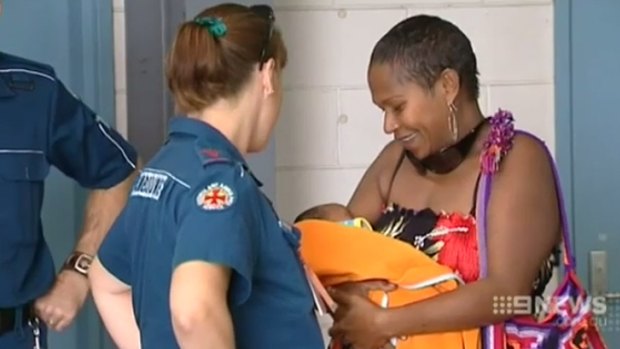
Raina Thaiday thanks paramedics for safely delivering her child in the back of an ambulance in 2009.Credit: Nine News
In Melbourne, Katica Perinovic, 42, was being treated for paranoia and anxiety when she killed her children Claire, 7, Anna, 5, and Matthew, 3 before taking her own life. They were stabbed in the back. Their father is taking legal action, claiming his wife’s doctor was negligent in treating her mental health condition.
Some killers convince themselves they’re acting in the interest of their child. In Port Hedland, Margaret Dale Hawke, a heavy drug user who had repeatedly told services she was struggling, stabbed, strangled and suffocated her three children.
“Babies, I don’t want us to hurt any more,” she told them. Once, these cases were known as “altruistic killings”. “But it’s not altruistic at all,” says Brown. “It’s a violent death.”
The profile of an offender can shift with the age of the child. Neonaticide, or the killing of a newborn, is almost exclusively committed by mothers and often involves women who’ve concealed, denied or not even recognised their pregnancies. One British study cites the heartbreaking example of a young teenage mother who hid her newborn in a school bag, before telling her mother, “Don’t be mad, mum. I’ve had a baby.”
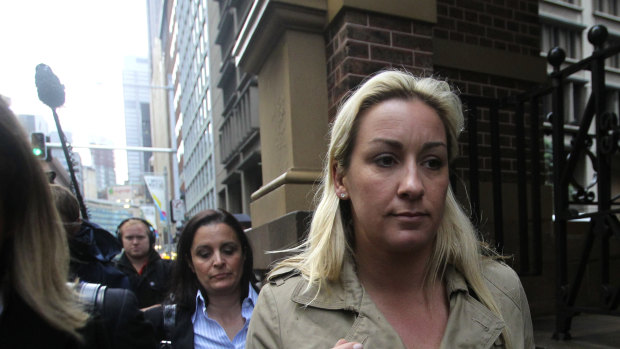
Keli Lane leaves court during her trial in 2010.Credit: Nick Moir
Australia’s most famous case is that of Keli Lane, a polo player from Sydney’s northern beaches who hid five pregnancies over seven years. She terminated two, and put two babies up for adoption. She was convicted of murdering the fifth, a girl called Tegan. Between the baby’s delivery at Auburn Hospital on September 12, 1996, and her mother’s arrival at a friend’s wedding a few days later, Tegan disappeared and has never been found.
Infanticide, involving the killing of a child before their first birthday by their mother, is a discrete crime in NSW and carries a similar penalty to manslaughter. It comes from a British law written in the days when murder was punishable by death, but authorities felt women suffering post-natal mental illness should be given grace.
The law is rarely used, and police tend to lay murder charges instead. Murder was the charge levelled at NSW woman Kathleen Folbigg over the deaths of her four children. She was convicted in 2003 but pardoned by the NSW governor last year after new medical evidence suggested the babies might have died of natural causes. Another Sydney case involved a woman who drowned her six-month-old baby in the bath tub after developing psychosis after the birth, and worrying obsessively that the child had dwarfism.
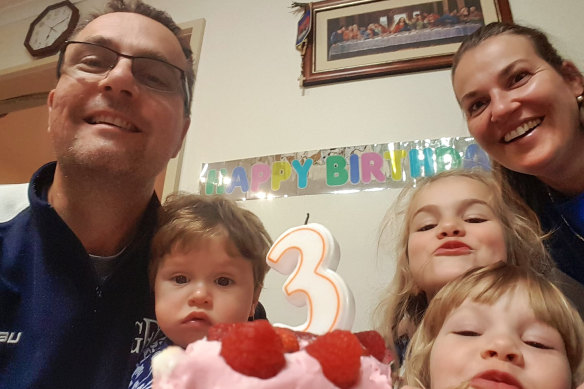
Melbourne woman Katica Perinovic killed her three children before taking her own life.
Most filicide victims are not yet five years old. Younger children are more likely to be suffocated, drowned or shaken, and older children – those over 10 – are more likely to be stabbed or shot. Police are still waiting on toxicology results to see if Ben and Russell Smith were drugged when they died, and have not revealed whether they were killed together.
Brown said such a violent act from a mother could leave a child frozen with shock and fear. “You just couldn’t believe your mother would do it, and by the time you realise she’s doing it, you’re close to death,” she says.
Studies into what goes through a mother’s mind at the time of the crime are rare. One, in which British researcher Julia Stroud interviewed dozens of perpetrators, “didn’t get much sense from them,” says Brown. “Most were incoherent.”
As Hawke said to a West Australian court: “I don’t know why I did what I did. I remember being all over the place and confused.”
What Stroud did find, says Brown, was that many of the women thought they’d told services they needed help. “They believed they were expressing their fear that they would kill their children, but the services didn’t hear that at all.”
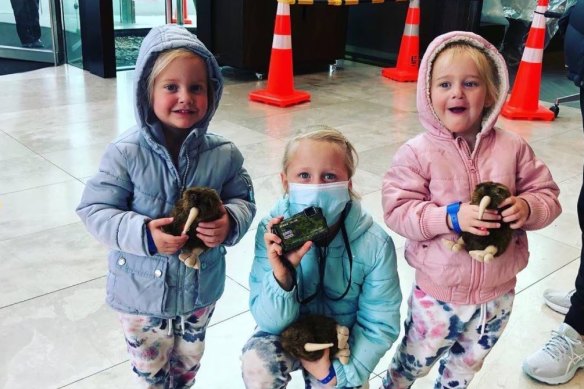
Twin sisters Maya and Karla Dickason and their older sibling Liane. The girls were killed by their mother Lauren.Credit: Facebook
Stroud also found that the women had been struggling with multiple stresses before the killing, and then something happened to tip them over the edge. “It might have been quite minor, but it was major to them at the time.”
This was what Lauren Dickason, a doctor in New Zealand, told the court during her murder trial. She had been struggling with her mental health; she’d even confided her homicidal thoughts to her husband. The whole family had just spent two weeks in COVID isolation after arriving from South Africa. One night, when her husband was out, “something just triggered me”.
The children were “being wild again, jumping on the couches, not listening to what I’m trying to tell them.” She received a request for more information about her daughter’s cleft palate. She didn’t have the strength to make the children’s school lunches. She told the children they would make necklaces with cable ties. They put the ties around their necks and died by asphyxiation.
Burke says services should be better trained to identify red flags. Smith, who was not known to child protection teams within the Department of Communities and Justice, “is the sort of person who needed a family agency stepping in every week to keep her afloat”, she says. “Our argument from our studies is that women do seek help but nobody appreciates the problems they have looking after their children. The staff in those services are not educated to appreciate that there are risks of filicides that they see, so they don’t probe deeply into what’s disturbing the person.”
It’s too late for Russell and Ben, whose lives were allegedly ended by the woman who was supposed to keep them safe. “Russell and Ben were happy, funny, outgoing boys, and were very much loved by their family and friends,” said their father, who will mourn them forever.
Support is available from the National Sexual Assault, Domestic Family Violence Counselling Service (1800RESPECT) on 1800 737 732.
If you or someone you know is in need of support contact Lifeline on 13 11 14 or Beyond Blue.
Start the day with a summary of the day’s most important and interesting stories, analysis and insights. Sign up for our Morning Edition newsletter.